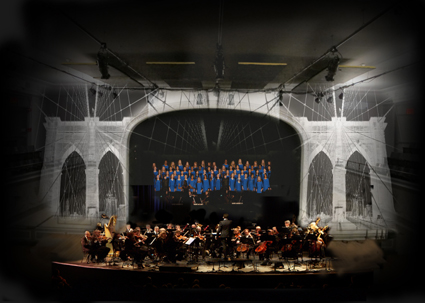“Brooklyn Village,” a Collaborative Musical History of the Joining of the Boroughs

brooklyn-village-bridge.jpg
Featuring World Premieres and Work by Aaron Copland, Sufjan Stevens
Two venerable Brooklyn musical institutions have joined forces to present a multimedia performance. The Brooklyn Philharmonic, in its debut season under Alan Pierson, and the Brooklyn Youth Chorus (BYC), celebrating its 20th anniversary, will combine their powers and skills for “Brooklyn Village,” described as an “homage to the creative spirit of Downtown Brooklyn as it has evolved over the last 200 years.”
The performance space is Roulette, the experimental music venue that moved from Manhattan last year into a renovated 1920s art deco theater on Atlantic Avenue last year.